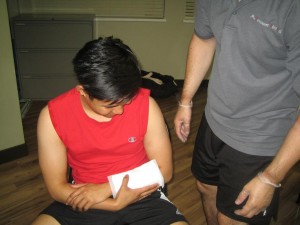A puncture wound has a small-sized entry brought about by any pointed or sharp object such as a nail. This type of wound is common in the foot, particularly during warm weather especially when going barefoot.
Even if they occur frequently, a puncture wound in the foot is often ineffectively cared for. If not correctly treated, infection or other complications might arise.
Proper treatment in the initial 24 hours is vital due to the risk of embedding the foreign object beneath the skin. Based on studies, complications could be prevented if professional treatment is started right away.

What to do for foreign bodies in a puncture wound?
Various foreign objects can be embedded in a puncture wound. Glass, nails, toothpicks, insulin needles, sewing needles and seashells are some of the common objects.
Additionally, pieces of skin, shoe and sock might be forced into the entry point during a puncture, together with fragments from the foreign object.
Remember that all puncture wounds are considered as dirty since it involves the penetration of an object that is not sterile. If an object is left in the wound, it increases the risk for developing other issues.
Management of puncture wounds
Puncture wounds should be properly cleaned and monitored during the healing process to prevent any complications.
Even if the individual has been taken to the emergency department for immediate care of the wound, a surgeon should be consulted for thorough cleaning and follow-up. The earlier this is done, the better, usually within 24 hours after being injured if achievable.
The surgeon will ensure that the wound is thoroughly cleaned and there are no debris or other foreign object left. The area might be numbed, thoroughly cleaned within and outside the wound and monitor the progress. In some instances, X-rays might be requested to check if there is still any leftover objects in the cut or if bone damage is present. Additionally, antibiotics might be given if needed.
Quick Note / Disclaimer
The material posted on this page on a puncture wound is for learning and educational purposes only. To learn to recognize and manage this type of wound, register for a first aid and CPR course with Toronto First Aid.
